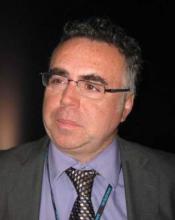“Five years ago, when we started out, the idea of bringing international organizations together to work on a project like this seemed like Mission Impossible,” recalled Dr. Kupfer, professor of psychiatry at the University of Pittsburgh. “But now we’ve got a book and an app. We’ve accomplished phase 1 and have begun phase 2 of the implementation strategy.”
This next phase involves task force members holding meetings with editors of the major North American and European psychiatry and neuroscience journals in order to get their buy-in.
“We’re asking them to write an editorial commentary about the need for this new nomenclature. And we’ll ask them to develop a fairly uniform instruction for authors. Our target date is that by May 15, 2015 – while the APA is meeting in Toronto – the nomenclature will be adopted in manuscripts submitted to the journals, although maybe for a while the currently used terms will be in parentheses,” he said.
In the spring, the task force plans to reach out to the major psychiatric organizations with educational efforts. Also next spring, discussions will be held with the Food and Drug Administration, World Health Organization, and other regulatory bodies.
Further down the line, with a 3- to 5-year time horizon, the panel and its supporting organizations hope to get the new nomenclature introduced in textbooks and in the educational protocols used for medical students and psychiatry residents. They’ll also be meeting with the editors of the major nonpsychiatric medical journals as well as reaching out to leaders in primary care medicine.
“This is going to be an ongoing process,” Dr. Kupfer said. We’ll be educating a variety of different stakeholders, and that’s going to take time.”
Panelists said the new nomenclature won’t be used to rank medications or create clinical guidelines. However, the app can display all of the medications having a given efficacy and/or pharmacologic target.
Dr. Nutt said feedback from the pharmaceutical industry has been positive so far.
“We now meet with companies having compounds in phase 2 or 3 testing to discuss what their drug should be called. We think this is going to cut through a lot of the silliness and stupidity we’ve had over the last few decades,” he explained.
For example, companies developing new medications that target a specific aspect of schizophrenia, be it positive symptoms, negative symptoms, or cognitive symptoms, are well aware that under the traditional regulatory standards, their new agent would be classified as an antipsychotic. That means their drug would automatically get a black box warning label, even if its pharmacology is completely different from schizophrenia drugs that have been associated with serious side effects. The companies want to avoid that black box when it’s not warranted, and they’re starting to recognize that the new neuroscience-based nomenclature can be helpful in this regard, according to Dr. Nutt.
Dr. Eduard Vieta, chair of the ECNP communication committee, noted that pushing for the new nomenclature program represents a major commitment by the organization. The new terminology will ultimately change the way clinicians and their patients think about the drugs they use.
“There is a lot of important science being presented at this conference, but this nomenclature project is clearly the biggest news at the meeting,” observed Dr. Vieta, professor of psychiatry at the University of Barcelona.
The presenters reported having no financial relationships relevant to the nomenclature project.


